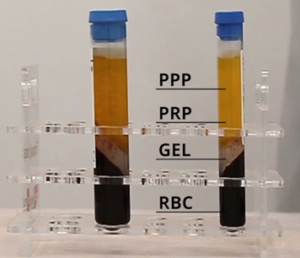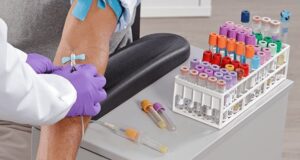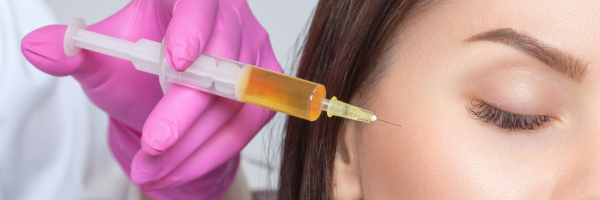In the ever-growing world of cosmetic treatments, Cosmetic Courses stands out as a leader in providing quality training for Platelet Rich Plasma (PRP) therapy, a popular method for skin rejuvenation and hair loss treatment. At Cosmetic Courses, we are dedicated to offering the highest level of training. To achieve that, we collaborate with industry partners who share our values and support our mission.
Our trusted partners in PRP training is Cellenis® PRP. In this blog post, we’ll explain why we choose Cellenis PRP for our training courses.
Cellenis® PRP
First and foremost, patient safety is our utmost priority. Cellenis® PRP not only meets but exceeds the stringent regulatory standards set for medical devices in the UK. This ensures that patients are not put at risk during the treatment process.
PRP systems can vary significantly in their preparation methods and resulting PRP components. Cellenis PRP stands out due to its unique and proprietary Separator Gel technology. This optimises the biological profile of Cellenis® PRP in several ways:
- Effective removal of inflammatory neutrophils: Cellenis PRP efficiently separates inflammatory neutrophils from healing monocytes, which fight infections and stimulate stem cells. The ability to separate these specific types of white blood cells is unmatched by any other PRP system. As a result, Cellenis PRP is the least inflammatory PRP available in the market.
- Elimination of red blood cells (RBC): Cellenis PRP ensures that there are no detectable red blood cells present. RBCs are known to cause inflammation, inhibit fibroblast proliferation, and even lead to cell death. By removing RBCs, Cellenis PRP promotes optimal conditions for hair regeneration and overall skin rejuvenation.
 High platelet recovery rate: In hair loss treatment, Cellenis PRP has the unique ability to increase the platelet concentration to the optimal formulation required. This is four to five times the concentration found in patients’ blood. This means that each microliter of PRP injected contains at least one million platelets. Achieving this concentration is crucial for optimal hair regeneration outcomes.
High platelet recovery rate: In hair loss treatment, Cellenis PRP has the unique ability to increase the platelet concentration to the optimal formulation required. This is four to five times the concentration found in patients’ blood. This means that each microliter of PRP injected contains at least one million platelets. Achieving this concentration is crucial for optimal hair regeneration outcomes.- Modified anticoagulant: Cellenis PRP utilizes an anticoagulant with a pH of 7 and added dextrose, which is beneficial for platelets. Unlike other anticoagulants with acidic pH levels, Cellenis PRP causes no stinging sensation when injected. Enhancing patient comfort during the procedure.
Value for Money
Furthermore, Cellenis PRP offers excellent value for money. While there may be similar-looking PRP tubes available at lower prices, published evidence shows that the platelet capture of these lower-cost alternatives is at least half that of Cellenis. Consequently, using Cellenis PRP means you need only one tube, whereas you may require two tubes of the lower-cost PRP to achieve the same platelet concentration. By opting for Cellenis PRP, you ensure optimal outcomes for your patients and help build your professional reputation.
Now, let’s address a common question: why can’t we use vacutainers for PRP preparation, even if we choose a reputable brand like BD from a pharmacy?
Vacutainers, regardless of the brand, are intended for blood analysis only. They are not certified or classified for PRP preparation and injection into humans. The gel and tube contents have not undergone safety testing for PRP production. In addition, some anticoagulants used in in-vitro diagnostic (IVD) vacutainers can be detrimental to platelets. Their acidic pH levels may cause discomfort upon injection.
It is worth noting that in the United States, BD vacutainers come with labels explicitly stating that they are not to be used for PRP preparation. Although such warnings are not mandatory in Europe, it is possible that the UK’s new UKCA mark, replacing CE certification, may require similar precautions from the HMRA (UK regulatory authority).
At Cosmetic Courses, we strongly discourage the use of IVD vacutainers for PRP preparation. Your patients, who trust you and invest in your treatments, deserve a higher standard of care and safety.
Another concern: purchasing PRP tubes from uncertified suppliers offering significantly lower prices
If you come across PRP tubes from a supplier claiming CE certification but do not find the CE mark, the four-digit number, or the name and address of the EU Representative or UK Responsible Person on the label, be cautious. The absence of CE certification indicates that the manufacturer has not undergone the necessary inspections and audits to ensure compliance with EU and UK regulatory standards. It also means that there are no checks on the tube’s contents or the manufacturing processes.
In such cases, we strongly recommend insisting on seeing the CE certificate from the supplier. Verify the authenticity of the certificate by consulting a competent person familiar with the requirements. Using uncertified PRP tubes can pose risks to patient safety. This has been evidenced by past incidents like the PIP breast implant scandal, which led to stricter regulations.
The temptation to cut corners and save money through do-it-yourself (DIY) PRP preparation
While it may be tempting to save approximately £40-£60 per treatment. DIY alternative involves using sterile empty vacuum tubes and purchasing anticoagulant separately. However, this approach has several drawbacks. The platelet recovery rate is around 40%, meaning the concentration of platelets in the PRP is significantly lower. Moreover, the anticoagulant used is typically the standard acidic type, which may cause discomfort upon injection.
Using such DIY methods compromises the quality and effectiveness of PRP treatment. Your patients may not be aware of the suboptimal results, but as a healthcare professional, it is your responsibility to provide the best possible care and maintain high treatment standards.
In conclusion, Cosmetic Courses prioritises patient safety and effective outcomes. That’s why we choose Cellenis PRP, a superior PRP technology that ensures optimal biological profile, patient comfort, and excellent value for money. We strongly advise against using uncertified PRP tubes or resorting to DIY methods, as they compromise patient safety and treatment efficacy.
By staying committed to the highest standards of training and technology, we aim to provide our trainees with the best tools and knowledge to deliver exceptional cosmetic treatments.
To find out more about our Platelet Rich Plasma Training Course – click here!












